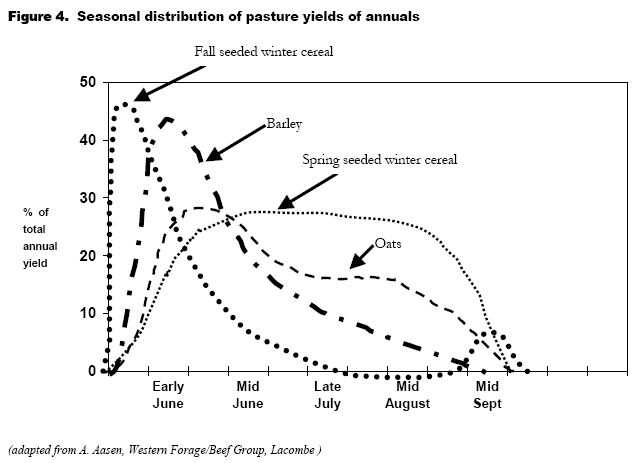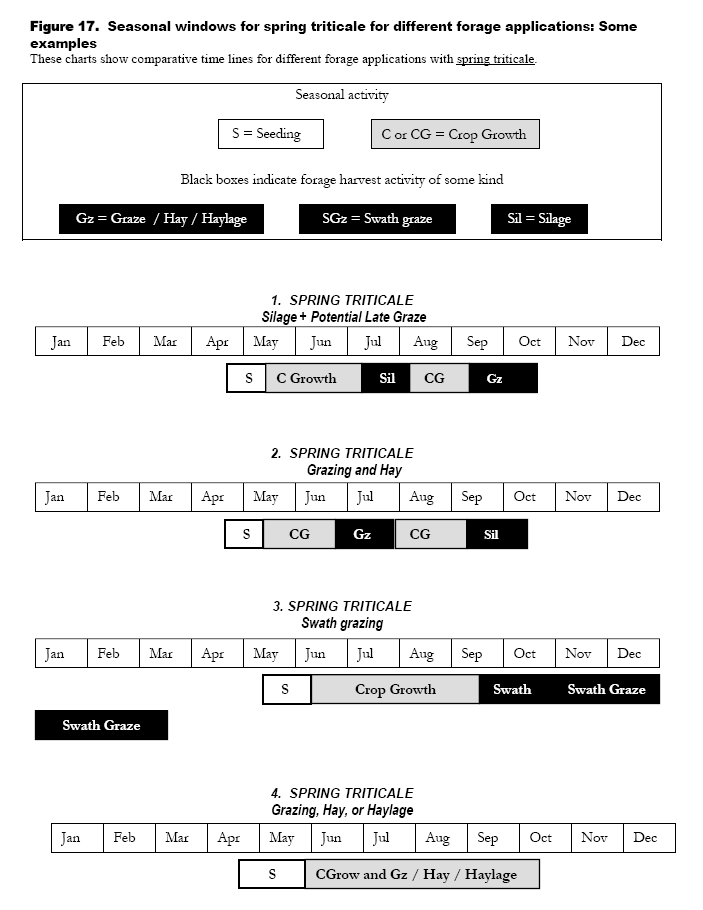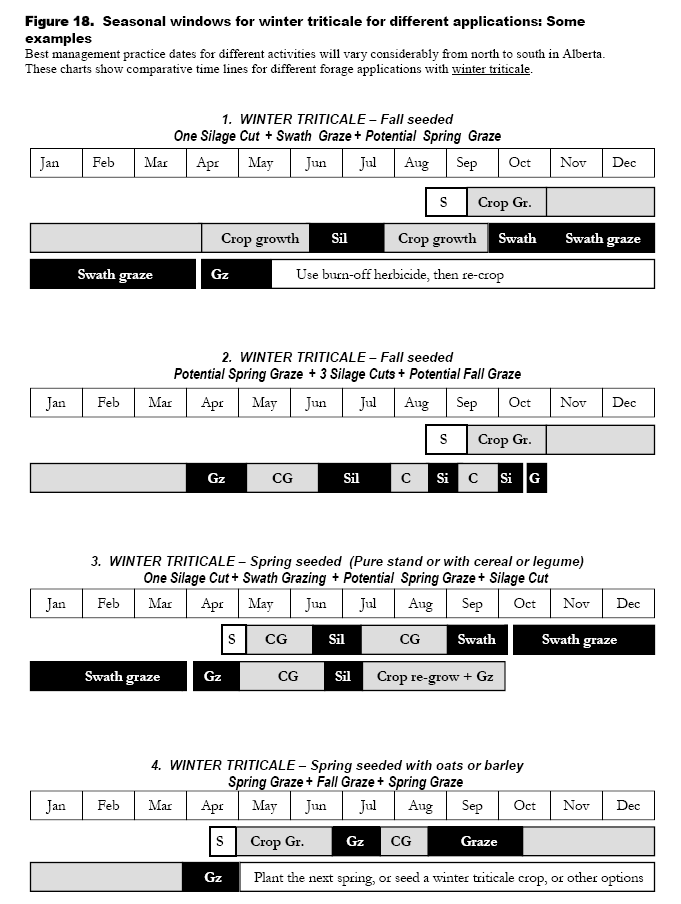| | Triticale forage productivity and use | How triticale fits into sustainable cropping rotations
Triticale Forage Productivity and Use
Annual cereals can provide an excellent source of supplementary forage, offering an extended grazing season and diversity in crop rotations (Figure 4). Due to its superior silage yield potential, triticale has proven to be very competitive with other cereals for yield and quality.
An advantage of growing winter triticale is its extension of early spring and late fall grazing.
In these applications, forage triticale has much to offer in helping diversify Western Canadian cropping systems (Briggs, 2001; The Growth Potential of Triticale in Western Canada).
For detailed information on triticale forage production, refer to the AgDex ‘Triticale Forage Manual’ (2005, in press).

How Triticale Fits into Sustainable Cropping Rotations
Producers recognize the many different ways in which spring and winter triticale can be incorporated into rotations to extend seasonal access to forage, and to spread field operations throughout the year. As such, forage has become the predominant triticale application in Western Canada.
Winter triticale can be used for dual purposes over more than a calendar year. However, if grazed or harvested for forage and then left for grain production, grain yields are generally reduced. Spring triticale can be grown as a mixture with other cereals or with legumes in a forage or grain mixture harvest. It will improve the standability of weak-strawed species in a mixture. Spring or winter triticale can also be used as a short-term cover crop and/or for green manure, or in combination with chemical fallow.
Salmon et al (1993) warn that, “Over-wintering of spring planted winter wheat or winter triticale is not a suitable means for seed production, compared with conventional fall planting or re-seeding to spring cereals.” Some producers have found that with good management practices, they have had some success in producing silage in the second year. However, this practice is not recommended as it increases the probability of winterkill and lowers yield potential.
Spring and winter triticale are both suitable for grain and forage use, with the latter being grazed or conserved. Western Canadian producers have developed numerous ways to use this crop to advantage in different rotations. A number of these options are illustrated in Figures 17 and 18.
For producers requiring a continuous supply of silage for feedlots, winter and spring triticale can be planted in different fields to provide a continuum of harvesting dates for silage, when scheduled with fields of barley and oat silage. Winter triticale can be harvested for silage from mid to late July, barley from late July to early August, oats from early to mid August, and spring triticale from mid to late August. In addition, use of spring triticale for swath grazing through the winter can reduce the fall workload for storing silage in cow-calf operations.
Thus triticale for forage can well be described as ‘The Crop for All Seasons’.
Because of the high demand for barley silage and feed grain, many western Canadian rotations tend to have too high a frequency of barley cropping. This causes increased problems from barley leaf diseases. Triticale for silage or grain provides an excellent disease break from barley and oats, since triticale is not susceptible to many of the same diseases as oat or barley.

 |
|